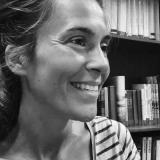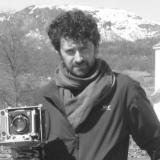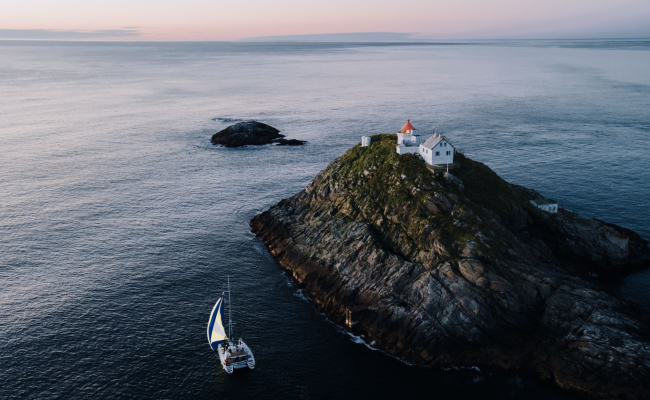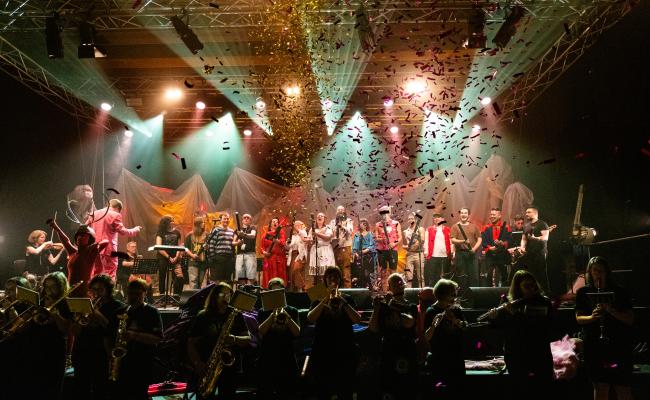Op-ed: Art-based research can help us value nature in new ways
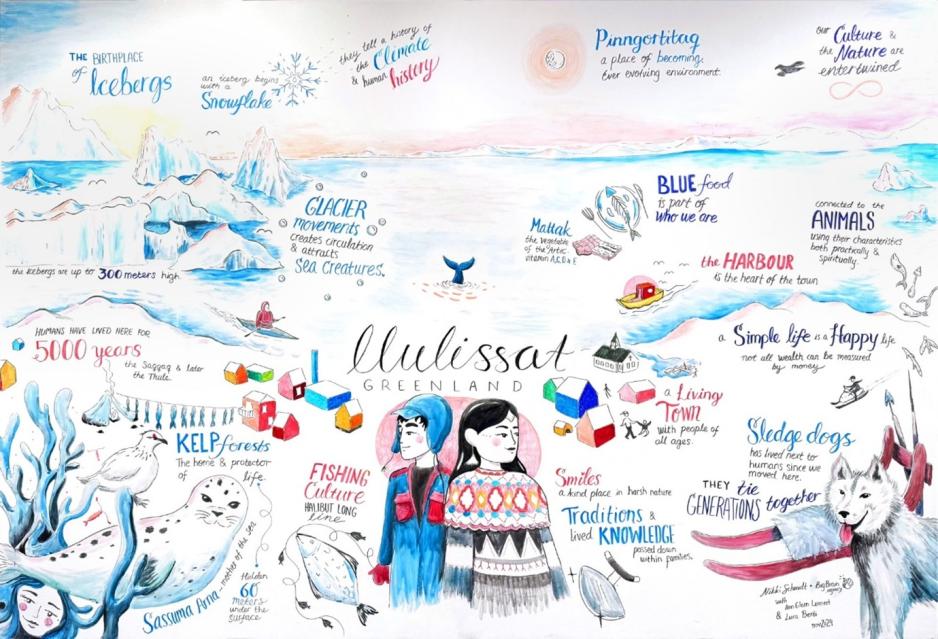
Figure 1. The sketch drawn on the wall in the Illu Art and Science Hub, was our visual diary of our fieldwork, visualizing the knowledge people shared with us and the way we experienced our stay and workshops in Ilulissat, Greenland.
Op-ed: Art-based research is a creative way of doing community science where you play with different artistic methods as a tool for exploring, collecting and visualizing data. It can contribute as an innovative approach and a holistic understanding to today's socio-ecological challenges.
This is an opinion piece written by external contributors. The views expressed are the authors' own.
Art and creativity have a unique ability to bring people together in an inclusive way. There are no social layers, and it creates space to explore your own thoughts and allows people to express themselves in a non-binding way.
Art can help us express ourselves in a different way when words fall short.
The use of art in research has evolved from the understanding that life and experiences of the world are multifaceted and that art offers ways of understanding the world that involve sensory perceptions and emotions as well as the intellectual.
This can be done through drawing, creative thinking, photography, singing, dancing, simply knitting or sewing together. In our work, we have used the art forms of photography, painting, sketching, interactive workshops, and teaching.
All methods contributed in their own unique way, as this creative way of thinking and working gives freedom to explore ideas together, identify challenges, and co-create solutions from a completely new perspective. In addition, it can create understanding for each other and our relationship to the nature surrounding us.

Figure 1. The sketch drawn on the wall in the Illu Art and Science Hub, was our visual diary of our fieldwork, visualizing the knowledge people shared with us and the way we experienced our stay and workshops in Ilulissat, Greenland.
The miracles of nature
When we think of the sea, the sea and the life within have created the coastal cultures we have along our coasts today.
It has given us water, clean air, and food, and materials for medicine and industry. On land, our crops throughout history have been depended on pollination by insects, and fisheries on complex biological processes.
Nature has protected us from floods, storms, and extreme events when we have given it the space to do so - these are called ecosystem services, which are nature's many benefits.
These benefits have given us opportunities and created traditions, well-being, and food on our tables, but how do we maintain the unique balance between people and nature along the coast in the future?
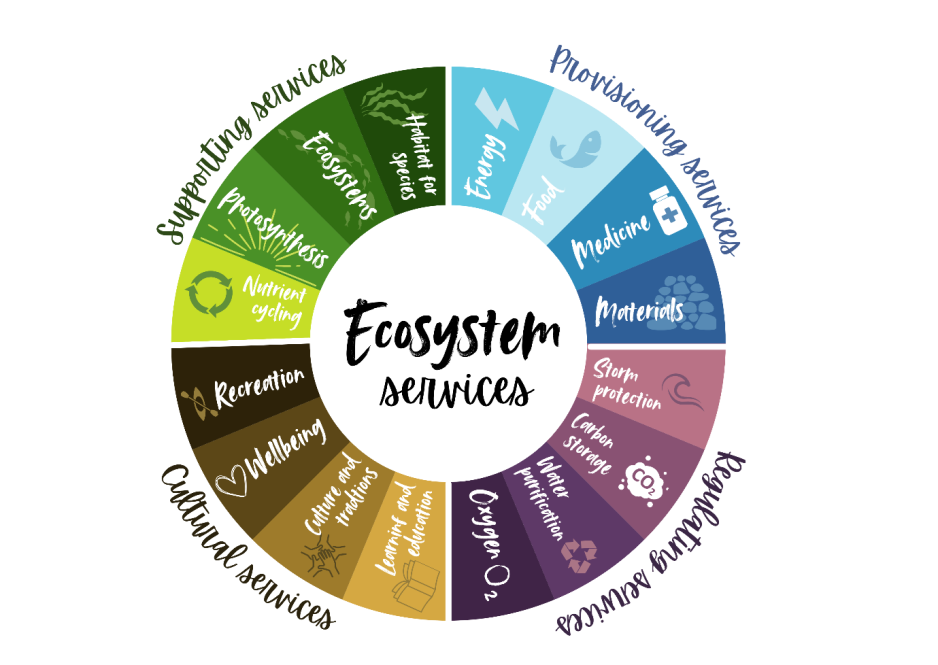
Figure 2. Ecosystem services are the goods, services or products that nature provides to humans thanks to ecosystems. These consist of provisioning services, regulating services, cultural services and supporting services. The example here is a sample of the services we get from the sea.
"We don't think about it on a daily basis. We draw in our breath and breathe. Completely free. In fact, up to 70% of the oxygen we have in the atmosphere originates from the ocean. Maybe it's time we start to recognize and understand the benefits we get from nature?"
In connection with the project GreenFeedBack, we have traveled around the Nordics and the Arctic to understand and visualize how ecosystem services are united with our lives, our choices, our knowledge.
We also try to find out how our worldview and wishes for the future depend on our relationship with nature.
Your Voice Matters Workshops
We have held creative workshops with youth, elders, students, researchers, local and indigenous people, and administrators - people from many different geographical areas and with different backgrounds.
Our motto is: The more diverse, the merrier. Here, we have shared and discussed knowledge, perceptions, connection to and the value of the sea, nature, opportunities, challenges, how and what we should prioritize, and how we achieve our goals in a good and ethical way.
How do we accommodate diversity, different values, and worldviews? And how can we work as a team to fulfill our future dreams in balance with nature?
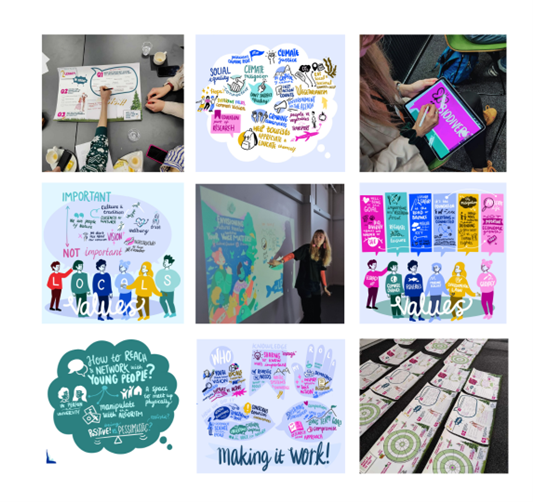
Figure 3. We have had various workshops in the Nordics and Arctic. All consisted of both drawing, sketching, various templates that we worked on in teams and good conversations and discussions. Photo: Ann Eileen Lennert.
We worked with different sheets, drew and discussed in teams. We have created spaces for listening and being heard.
Through our art tools, we have created awareness and common understanding for the many different perceptions, values and worldviews that shape the coast in the Nordics and the Arctic.
Because we need this understanding and recognition when we talk about ecosystem services and how the future will be shaped. It requires compromises and mutual understanding.
In addition, this knowledge is important for the administration, politicians, and decision-making processes.
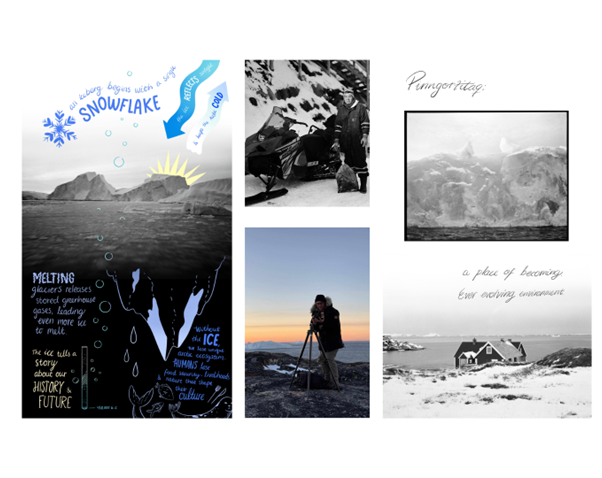
Figure 4. Art-based research is not only a valuable way and artistic method to explore and collect data, but also a good tool to visualize and communicate research and data. Photo and drawings by Luca Berti and Nikki Schmidt.
What does the knowledge shared say so far?
During the various workshops we have held, we have seen that there is a difference in connection, understanding, perception and value of nature and its services.
That we do not all have the same thoughts, priorities and dreams for the future. Thoughts were shared about green energy as something good, but also as something conflicting and unethical.
That climate adaptation is important, but one must also think about nature's balance.
That the ecosystem services nature contributes with should also be thought and understood in relation to social conditions and where we stand as a society.
That we must constantly remember the inclusion of the local communities and that constantly work to ensure that they get more ownership of administration, development and politics in their geographic region.
Not least, all knowledge is important and valuable! Whether it's the local fisherman, the young people who think about the future, the Sami who has a whole culture of knowledge behind them, the school teacher, the baker, you and me. We can all contribute in a unique way.
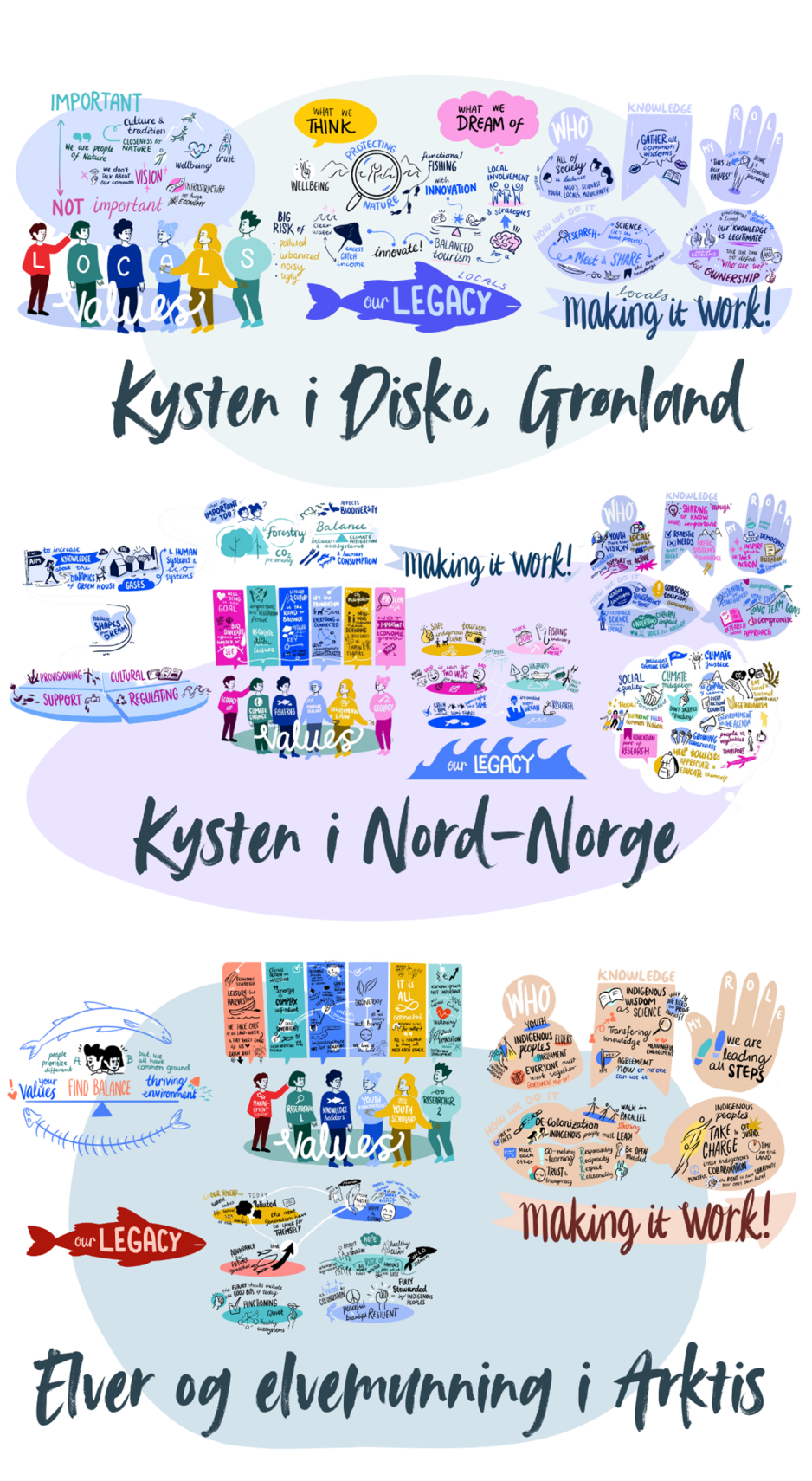
Figure 5. Examples of various visual summaries from our workshops dealing with coasts, rivers and estuaries. The key words were communication, openness, equality, justice, listening, common goals, compromise, understanding of diversity, a sense of belonging, ownership and creating a constructive loop between the different values in society together with the wide range of people with unique knowledge, and making use of nature and what nature contributes.
Often the thoughts dealt with the provisioning services and how unsustainable use of these services affected other services as well.
We got local stories and shared experiences about trawling not only affecting the seabed, but also rivers, estuaries, lakes, its ecosystems, ecosystem services, food security, cultures, local and indigenous livelihoods upstream. Places that many call home and ecosystem services that many rely on.
The provisioning services were also linked to the cultural services. That for some, what you harvest from nature is not only food, it also plays a key role in traditions, creates important bonds between families, individuals and elders.
It embodies peoples’ symbolic ties to the environment and knowledge based on these environments throughout history. It is an identity, culture, and lifestyle.
What also became clear was that the other services, such as regulation and support services, were not often mentioned, as they are for many intangible and not thought about on a daily basis, - like being able to breathe.
This shows that we need to get better at bringing out the value and importance of these services, as they are crucial for our lives and existence.
Here, art, together with research, can maybe lead the way and create awareness of these important services that are our most important tools in relation to climate and climate adaptation.
This work is done in connection with EU Horizon Project GreenFeedBack.

